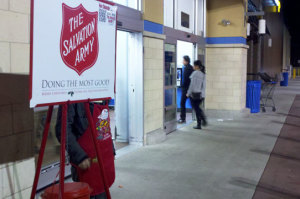Americans Depend on TV, Online Media for Political News; Print Media Sees Steep Decline
If you are seeking your daily dose of political news, chances are you obtain it from television or online media sources before you read your daily newspaper or listen to your favorite radio station, according to an updated Pew survey.
"The transformation of the nation's news landscape has already taken a heavy toll on print news sources, particularly print newspapers," says the Pew study. "But there are now signs that television news – which so far has held onto its audience through the rise of the Internet – also is increasingly vulnerable, as it may be losing its hold on the next generation of news consumers."
Around the time Bill Clinton was running for his first term as president in 1991, 68 percent of Americans got their political news from TV, while 56 percent read daily newspapers and 54 percent tuned into a local radio station. Back then the Internet was restricted to researchers, academics and of course, (the unofficial inventor of the internet) Al Gore.
But now things are different.
A Pew study has found that in 2012, television still leads with way with 55 percent of the people tuning in for political news. However, online and mobile news has leapfrogged into second place with 39 percent using computers or mobile devices for political news. Daily and weekly print newspapers have dropped to 33 percent and only 29 percent of Americans get their political knowledge by listening to the radio.
Still, 60 percent of those 65 and older rely on "traditional" media sources such as television and daily newspapers for their information.
For years now, media experts have been saying that print media, such as daily newspapers and magazines have been on a downward spiral. Just 23 percent say they read a print newspaper yesterday, compared to 47 percent who said the same thing in 2000. And although TV viewership is declining, it is showing some stability thanks to cable news channels such as Fox News, CNN and MSNBC.
"While print sources have suffered readership losses in recent years, television news viewership has remained more stable," read the report. "Currently, 55% say they watched the news or a news program on television yesterday, little changed from recent years.
"But there are signs this may also change. Only about a third (34%) of those younger than 30 say they watched TV news yesterday; in 2006, nearly half of young people (49%) said they watched TV news the prior day. Among older age groups, the percentages saying they watched TV yesterday has not changed significantly over this period.
As for cable news outlets, CNN, which once dominated the ranks with 23 percent market share in 1998, has dropped seven points to second place behind Fox News' 21 percent share. MSNBC has grown from 8 percent in 1998 to 11 percent in 2012.
The media with the fastest growth is digital and social networks. Today, nearly one in five Americans get their news from a mobile device, with 19 percent saying they saw news or headlines on social networking sites such as Facebook and Twitter. Currently, 41 percent of all adults say they used Facebook or another social networking site yesterday.
The Pew survey was conducted between May 9 and June 3, 2012, with a sample size of 3,003 participants and a margin of error of +/- 2.1 percent.





























